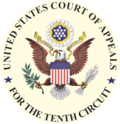 By Jude Biggs and Jeff Johnson
By Jude Biggs and Jeff Johnson
On March 4, 2014, the U.S. Supreme Court ruled that employees of private contractors and subcontractors who contract with public companies are protected under the whistleblower provisions of the Sarbanes-Oxley Act of 2002 (SOX). Lawson v. FMR LLC, 571 U.S. ___ (2014). The ruling means that private employers who have a contract with a public company may not retaliate against their employees who report a potential fraud. As pointed out in the dissenting opinion, the holding by the six-justice majority creates the potential for increased litigation as it offers private sector employees another avenue to bring retaliation claims. In addition, it implies private sector employers with such contracts may need to strengthen their corporate compliance and complaint procedures to discover and fix problems early.
Whistleblowers Reported Potential Fraud In Mutual Fund Operations
Two former employees of private companies that contracted to advise and manage mutual funds filed separate administrative complaints alleging retaliation under 18 U.S.C. §1514A, the whistleblower provision of SOX. The mutual funds themselves were public companies, but they did not have any employees. Instead, the funds contracted with private companies to handle the day-to-day operation of the funds, including making investment decisions, preparing reports for shareholders and filing reports with the Securities and Exchange Commission (SEC).
Jackie Hosang Lawson was the Senior Director of Finance for a private advisory firm that contracted to provide services to the Fidelity family of mutual funds. Lawson alleged that she suffered a series of adverse employment actions that resulted in her constructive discharge after she raised concerns about certain cost accounting methods being used with the funds. She alleged that she believed that expenses associated with operating the funds were being overstated.
The second petitioner, Jonathan M. Zang, was a portfolio manager for a different division of the company that advised Fidelity mutual funds. Zang alleged that he was fired after he expressed concerns about inaccuracies contained in a draft SEC registration statement concerning some of the mutual funds.
After pursuing their administrative complaints, both whistleblowers filed retaliation lawsuits under §1514A in federal court in Massachusetts. Their employers, collectively referred to as FMR, moved to dismiss the suits, arguing that §1514A only protects employees of public companies, and because FMR is a private company, neither plaintiff had a viable claim under §1514A. The District Court denied FMR’s motion to dismiss. FMR sought an interlocutory appeal to the First Circuit, which reversed, ruling that §1514A only refers to employees of public companies, not a contractor’s own employees. The Supreme Court agreed to hear the case to resolve a division of opinion on the issue. The question before the Supreme Court was whether the SOX whistleblower provision shields only those employed by a public company itself, or also shields employees of privately held contractors and subcontractors who perform work for the public company.
“Employee” Presumes an Employer-Employee Relationship Between the Retaliator and the Whistleblower
Section 1514A provides: “No [public] company . . ., or any officer, employee, contractor, subcontractor, or agent of such company, may discharge, demote, suspend, threaten, harass, or in any other manner discriminate against an employee in the terms and conditions of employment because of [whistleblowing or other protected activity].” FMR argued that the prohibition against retaliating against “an employee” meant an employee of the public company. The Court (in an opinion by Justice Ginsburg) disagreed. It looked at the provision as stating that “no . . . contractor . . . may discharge . . . an employee” and found that the ordinary meaning of “an employee” in that context was the contractor’s own employee. The Court stated that contractors are not ordinarily in a position to take adverse actions against employees of the public company for which they contract so to interpret the provision as FMR did would “shrink to insignificance the provision’s ban on retaliation by contractors.” The Court rejected FMR’s argument that Congress included contractors in §1514A’s list of governed parties only to prevent companies from hiring contractors to carry out retaliatory terminations, such as the “ax-wielding specialist” portrayed by George Clooney in the movie “Up in the Air.” The majority believed that Congress presumed that there must be an employer/employee relationship between the retaliating company and the whistleblower.
Purpose of SOX Supports Extending Whistleblower Protections to Employees of Private Contractors
The Court emphasized that SOX was enacted to safeguard investors in public companies and to restore trust in the financial markets after the collapse of Enron Corporation. The Court found that because outside professionals, such as accountants, lawyers and consultants, have great responsibility for reporting fraud by the public companies with which they contract, such employees of contractors and subcontractors must be afforded protection from retaliation by their employers when they comply with SOX’s reporting requirements. The fear of retaliation was a major deterrent to the employees of Enron’s contractors in reporting fraud. Consequently, the Court’s reading of §1514A extending whistleblower protection to the employees of private contractors is consistent with the purpose for which SOX was enacted.
Mutual Fund Industry Should Not Escape Ban on Retaliation
Because virtually all mutual funds are structured as public companies without any employees of their own, the Court expressed the need to protect the employees of the investment advisors who are often the only firsthand witnesses to shareholder fraud in the mutual fund industry. To rule otherwise, said the Court, would insulate the entire mutual fund industry from §1514A.
Dissent Worries About Opening the Floodgates to More Retaliation Claims
Justice Sotomayor, joined by Justices Kennedy and Alito, dissented from the majority, believing that the Court’s holding creates an “absurd result” that subjects “private companies to a costly new front of employment litigation.” According to Sotomayor, the Court’s ruling means that any employee of an officer, employee, contractor or subcontractor of a public company, including housekeepers, nannies and gardeners, can sue in federal court under §1514A if they suffer adverse consequences after reporting potential fraud, such as mail fraud by their employer’s teenage kids. The majority dispels this concern, stating that there is “scant evidence that [this] decision will open any floodgates for whistlelowing suits outside §1514A’s purposes” given that FMR did not identify a single case in the past decade in which an employee of a private contractor had asserted a §1514A claim based on anything other than shareholder fraud. Still, the dissent believes that only employees of a public company should be protected from retaliation for whistleblowing activities under §1514A.
Private Employer Take-Aways
Despite the majority’s reassurances that employers will not see a substantial increase in new whistleblower retaliation cases, only time will tell if they are right. Private employers who contract with public companies should review their employment policies to ensure that employees are protected from retaliation as a result of reporting concerns or unlawful activities involving the public companies with whom they do business. Employers also should train their managers, supervisors and human resources professionals on this new development so that decision-makers do not inadvertently expose their company to the risk of a whistleblower retaliation claim under §1514A.





